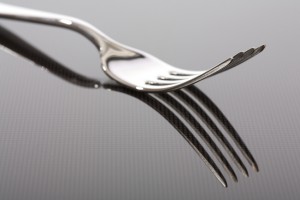Tired all the time? Is it chronic fatigue syndrome? Insomnia, stress, susceptibility to back pain, stubborn fat, recurring infections like thrush, skin conditions – these are all commonly seen by Susannah here. It’s not coincidence. We’re getting sicker and fatter – as a nation but also, our health concerns keep coming back. Why?
Currently, we go to the GP. Everything’s “within normal range” we’re told. But they’ll keep an eye on it. Then it’s already happening. We’re on metformin. Statins. We’re on drugs for life.
A transformation in healthcare is underway. We’re transitioning from the science and art of treating disease to the science of health and lifestyle healthcare. Standard GP tests don’t offer any insight into our health. They only test for markers that indicate a specific disease or absence thereof.
Story of health
Reference ranges are based on a severely unhealthy population. These ranges only indicate the levels at which we HAVE the disease or the illness. Rather, at Susannah Makram Clinics we’re looking at what’s OUR basic requirement for optimum health.
You see, we might know when we’ve high cholesterol at the moment we need statins or lipid lowering drugs. But what if there was more to this story? What if we have metabolic syndrome. Does it matter? At Susannah Makram Clinics we believe it does. Why? We’re talking about a whole other treatment in that case.
Our modern lifestyle may highlight the very need for this transformation, this change. we’re assessing the state of health of our body to see
i) The interactions between systems of our body
ii) How the patterns of these these interaction influence our health
We analyse our functional test results in this way. So we can give you our special formula:
EAT DRINK TAKE MAKE In The Four Phases.
Functional Blood Chemistry Analysis (FBCA)
Blood Chemistry and CBC Analysis – Clinical Laboratory Testing from a Functional Perspective, is currently used as a teaching tool in medical schools and institutes of higher learning in the US, Canada, Australia and New Zealand, and is the go-to blood chemistry reference manual on the desks and in the clinics of thousands of physicians and healthcare practitioners worldwide.
Pattern analysis of blood chemistry can effectively identify physiological imbalances and nutritional deficiencies by viewing and understanding the complex relationships that exist among blood chemistry factors.
Why blood and who takes it? Blood testing is a medically accepted, proven and a reliable assessment procedure providing a wealth of information on the health and status of our patients. At Susannah Makram Clinics we arrange it so you can have your blood sample drawn at the location you choose. But there is one requirement. The centre must have a centrifuge. This is a device used to spin the blood sample.
Blood Reference Guide – Clinical Conditions
Blood Chemistry and CBC Analysis – Clinical Laboratory Testing from a Functional Perspective helps thousands of practitioners worldwide. Clinical knowledge cannot be replaced but use of FBCA can help you in your day-to-day practice. Do you want to know more about Functional Blood Chemistry Analysis? Contact us.
Answers before drugs
Imagine having answers about eczema or psoriasis. Knowing the triggers or why you have it in the first place. Knowing why stubborn belly fat remains – even after slogging it out in the gym. What about finding small changes we can make to boost our performance, nip excess belly fat in the bud – before it severely affects our health. A way to successfully sleep at night, healthy weight loss, fat burning, get your energy back. A way to look younger, have clear skin, perform, live, grow.
Better health with drugs
At Susannah Makram Clinics we work with the medical community. What can we achieve after we’re on the slippery slope of necessary pharmaceutical intervention? Well, it’s hard to say exactly. But if we can help manage symptoms to improve function, mobility, energy levels, we find how we do this at your consultation. We can make every day count and better still, pains and aches that persist, can be manageable. We’re here to help manage chronic disease, not cure it. We’re here to improve health, quality of life i.e. function.







